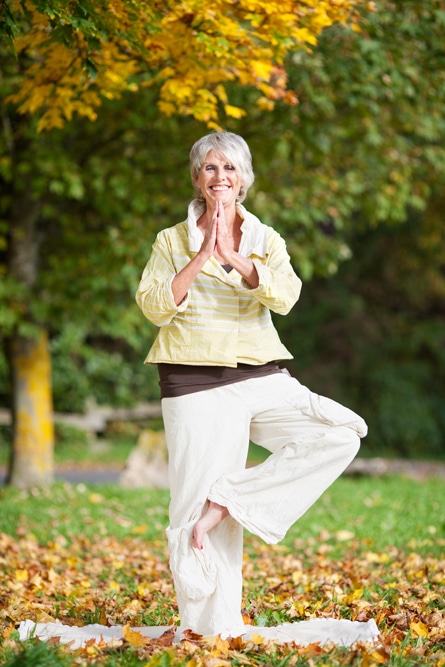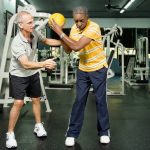A study from the University of Wisconsin asked why it is that those with Alzheimer’s disease (AD) tend to have more and more catastrophic falls than other older people with no cognitive impairment. Suffering three times the rate of falls as age- and gender-adjusted peers, those with AD, which affects mental and memory function, are already challenging to care for than their age peers.
I write this not to answer the question – the article answers it pretty well – but to highlight something few fitness professionals will understand just by reading the highlights of signs and symptoms of AD. To highlight the fact that generalized dementia that is not AD is subject to the same effects.
You see, trainers, even physical and occupational therapists are pretty savvy when it comes to doing exercises to prevent or reduce the effects of generalized falling.
We strengthen legs, core and upper body muscles to help our clients rise from or sit into a chair or toilet safely. We work the nervous system with drills and exercises that make the stabilizing muscles of the lower body and core (hips and low back/abdominals) respond to destabilizing forces – gravity, off loading, asymmetrical loading, etc. We stimulate falling movements to simulate falling, safely. The stepping lunge is a classic example of putting your foot out in front to catch yourself should you lose balance. Of course, speed and reflexes are critical agents in these kinds of drills and safety concerns are paramount, and limiting.
But what about working with those who have significant cognitive disorders? With all the physical skills we can train and develop, why can’t we seem to effect the kinds of benefits our other older clients get from exercise?
That would be my research question but the data collection would be daunting. First, you’d have to get dozens of AD patients together to agree to be subjects. Fairly easy, until you explain that we’re looking at fall rates and degrees; that could scare them and caregivers.
Second, you would have to train one group with a generalized program aimed at increasing strength as well as balance while using the other group as controls, perhaps training endurance and flexibility.
Third, you’d have to standardize the training programs, which means not individualizing it to the subjects themselves. That, I believe, is one of the downsides of research on diseased subjects. It would be necessary in order to minimize confounding variables from entering into the analysis.
Then you’d have to follow and record the fall rates and damages of both groups for a period of time that would allow you to ascertain statistically significant events and hope no one gets hurt too bad.
Good luck with that.
So when the author says, effectively, that there are “many environmental and dual-task-related factors” that put this population at risk, you can start to understand the challenges to care givers and fitness professionals.
“Start to think about just plain old walking or maybe more complex walking, when you’re walking and talking, or you’re walking and playing with your iPhone,” [Dr.] Mahoney said. “It takes visual-spatial abilities, working memory, information processing and reaction time.’
So now you can understand that balancing during normal daily tasks is less easy than it appears to those of us with intact and functional brains. Standing is fairly easy, rising and sitting are harder, but walking is truly a challenge comparable to being a running back, looking for holes and tacklers in split seconds. As older folks, as most AD patients are, the visual and reflexive capacities are already compromised. Add information processing speed and accuracy, working memory, and multi-tasking (holding a conversation or considering where to go), and now you can see that those with AD are substantially compromised.
And all we fitness folks can really offer is the body skills and systems. The brain, unfortunately, is gradually deteriorating to the point where even the body is at greater risk.
For a fitness professional, this is a very difficult task to manage, but good ones never quit. That is, until the client is no longer able to follow directions, instructions and restrictions even for their own safety. And doing not harm is our first ethos.















